Un abrazo, amada comunidad.
Hoy les traigo, más que una novela, un alma suave atrapada entre las hojas de un libro.
La primera vez que leí algo de la autora cubana Dulce María Loynaz, quedé irremediablemente enamorada de su manera de escribir. Sus Poemas sin Nombres fueron para esta lectora un descubrimiento encantador. ¿Era posible tanta belleza de imágenes? ¿Tanta magia hecha letras? ¿Tanto amor encapsulado en palabras?
A mí, amante de la narrativa más que de la poesía, terminó por atraparme. No podía dejar de leer aquellos versos, a ratos pasionales, otras veces sumisos, como gritos de quien sucumbe por entero al amor y ya no se resiste, no quiere, no puede.
Fue así que comencé a beber toda la literatura que encontraba de Dulce María, llegando a mis manos sus novelas Fe de Vida y Jardín.
Y precisamente, sobre Jardín quisiera contarles hoy, permítanme tomarlos de la mano y llevarlos al centro de una novela lírica, donde logra mezclar, de manera magistral sus dotes de narradora y poetisa.
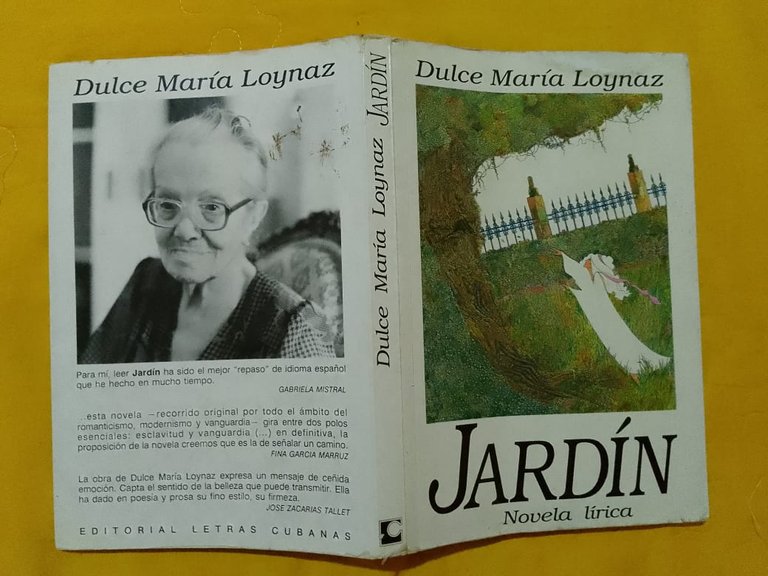
Aunque la autora terminó de escribir Jardín en el año 1935 no fue hasta casi veinte años después que vio la luz en la que sería la primera edición, pero no la última, de este libro.
Como en la mayoría de su obra, Jardín mantiene una atmosfera de nostalgia y soledad, una búsqueda contante y profunda del ser. Invita al personaje a la reflexión consigo mismo, e incluso lo hace con el lector, pues lo convence de que es un protagonista más de la historia.
La novela se centra en Bárbara, una mujer cuya casa cómoda y magna, posee un jardín maravilloso y grande, tan frondoso y único que en ocasiones la autora lo compara con una selva.
Pero no se queda solo el interés sobre la mujer que descansa con suavidad sobre un sillón antiguo en el portal o escudriña retratos viejos en las paredes encaladas de su alcoba.
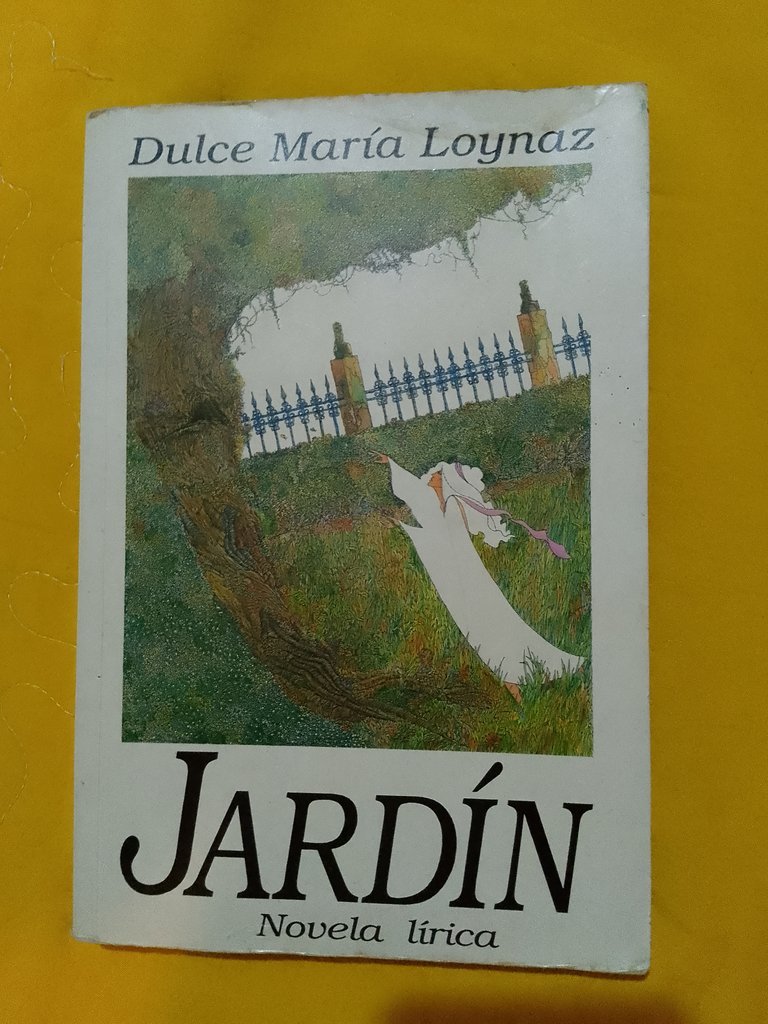
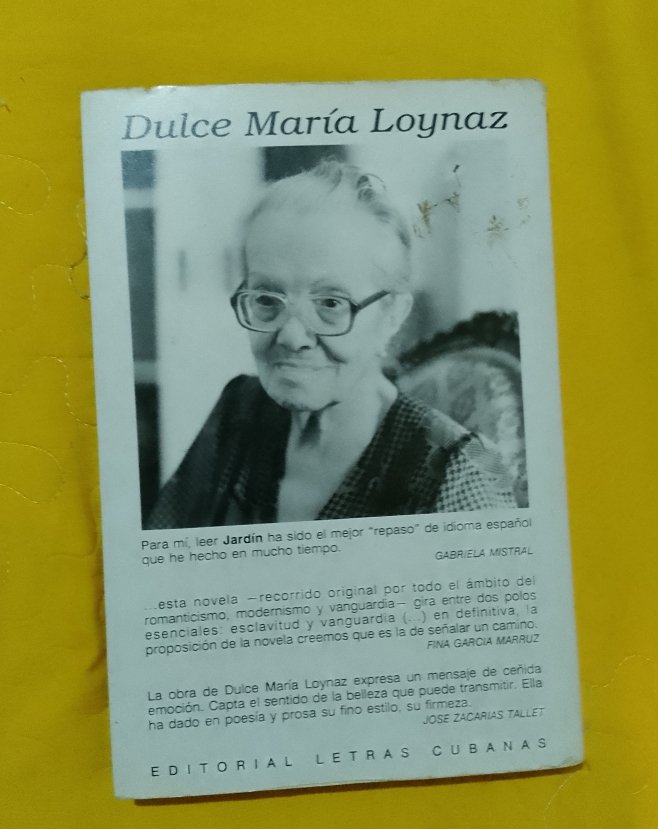
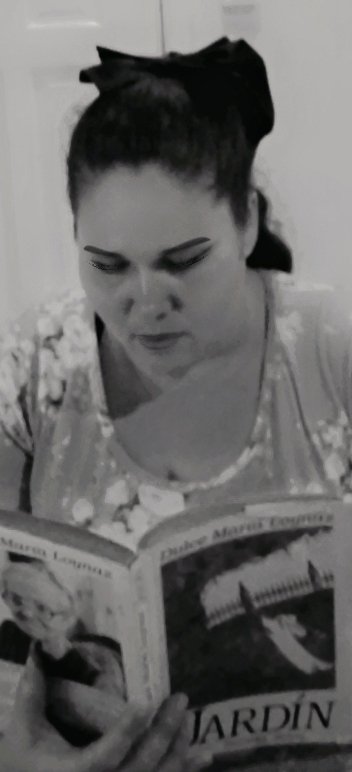
La novela toma giros, se tuerce en un viaje al interior, un cuestionamiento constante de la existencia. Y bifurca subtramas con el amor como protagonista en sus distintas formas y estados.
Llena de simbolismos y significados por desentrañar, Dulce María Loynaz nos obliga a cuestionar nuestros propios conceptos, para que, en busca de nuevas preguntas, se nos abra todo un mundo con nuevas respuestas.
Dentro de la narrativa, nos regala momentos exquisitos con cartas tan dulcemente redactadas, que le devuelve al lector ese sabor idílico de su poesía. Es por eso, quizás, que insistió la autora en calificar su libro como novela lírica, pues no pudo o no quiso desprenderse de sus voces de narradora y poeta.
La protagonista, aunque encerrada entre las paredes de su casa, no deja de soñar con escapar y su imaginación vuela, vuela tan lejos y tan alto que en ocasiones se pierde el sentido de la realidad. ¿Le sucedió esto a Bárbara de verdad o es solo una ilusión creada por su rechazo a la soledad?
Jardín es y será por siempre una joya de la literatura cubana. Puedo asegurarte que, si llegas a caer sobre la suavidad de sus hojas, ya no podrás liberarte de su encanto y, como Bárbara, perderás la noción de que es real y que no.
Más, no temas, una vez concluida la lectura, recuperarás el control, poco a poco. No te prometo que regreses siendo el mismo que antes de emprender ese viaje imaginario, porque una vez que lees a Dulce María Loynaz… ¿qué tan tú puedes seguir siendo? ¿Cuánto habrá muerto de tu Yo viejo? ¿Cómo podría siquiera continuar impávidos los latidos de tu corazón?
No se lee a Dulce María Loynaz sin que se estremezca el cuerpo, las entrañas. Sin que la nostalgia y el amor más limpio te cambien por dentro.

Este post ha Sido redactado libre de IA y todas las fotos incluidas son de mi propiedad.

💫 ENGLISH VERSION✨
A hug, beloved community.
Today I bring you, more than a novel, a soft soul trapped between the pages of a book.
The first time I read something by the Cuban author Dulce María Loynaz, I was hopelessly in love with her way of writing. Her nameless poems were for this reader a charming discovery. Was such beauty in imagery possible? So much magic made into letters? So much love encapsulated in words?
For me, a lover of narrative more than poetry, it ended up captivating me. I couldn’t stop reading those verses, at times passionate, other times submissive, like the cries of one who succumbs entirely to love and no longer resists, does not want to, cannot.
Thus began my journey of consuming all the literature I could find by Dulce María, eventually getting her novels Fe de Vida and Jardín into my hands.
And precisely about Jardín, I would like to tell you today; allow me to take you by the hand and lead you to the center of a lyrical novel where she masterfully mixes her talents as a storyteller and poet.

Although the author finished writing Jardín in 1935, it wasn’t until almost twenty years later that it saw the light in what would be its first edition, but not the last.
Like in most of her work, Jardín maintains an atmosphere of nostalgia and solitude, a constant and profound search for being. It invites the character to reflect with themselves and even does so with the reader, convincing them that they are another protagonist in the story.
The novel centers on Bárbara, a woman whose comfortable and grand house possesses a wonderful and large garden, so lush and unique that at times the author compares it to a jungle.
But the interest doesn’t remain solely with the woman resting gently on an antique armchair on the porch or scrutinizing old portraits on the whitewashed walls of her bedroom.
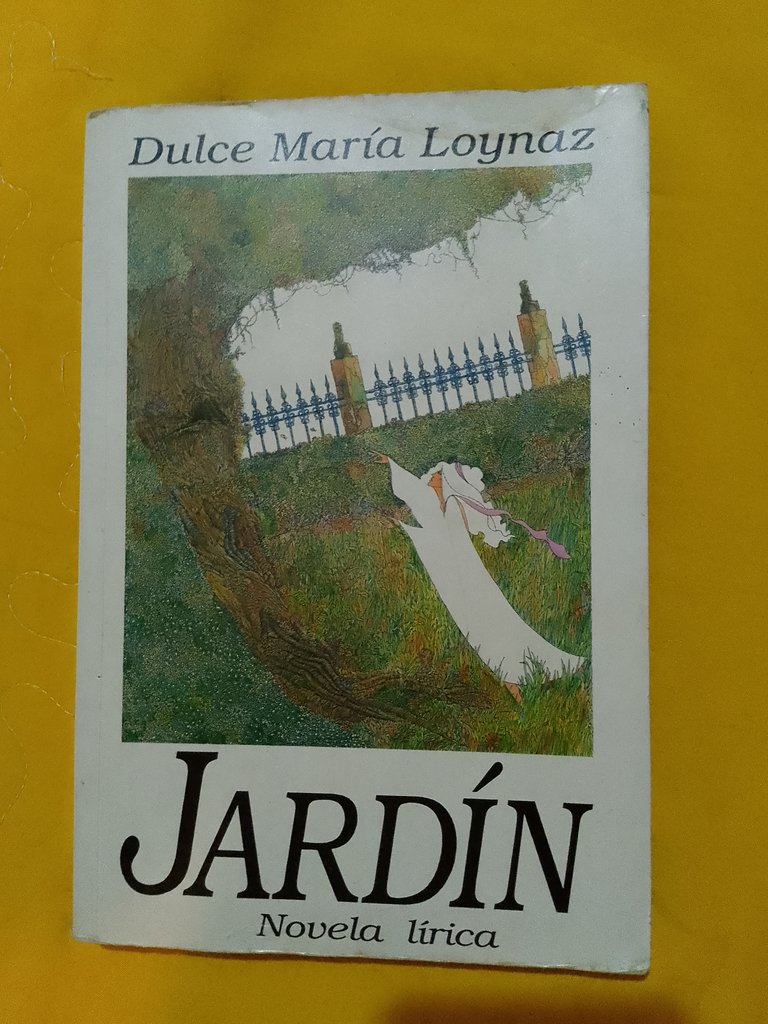
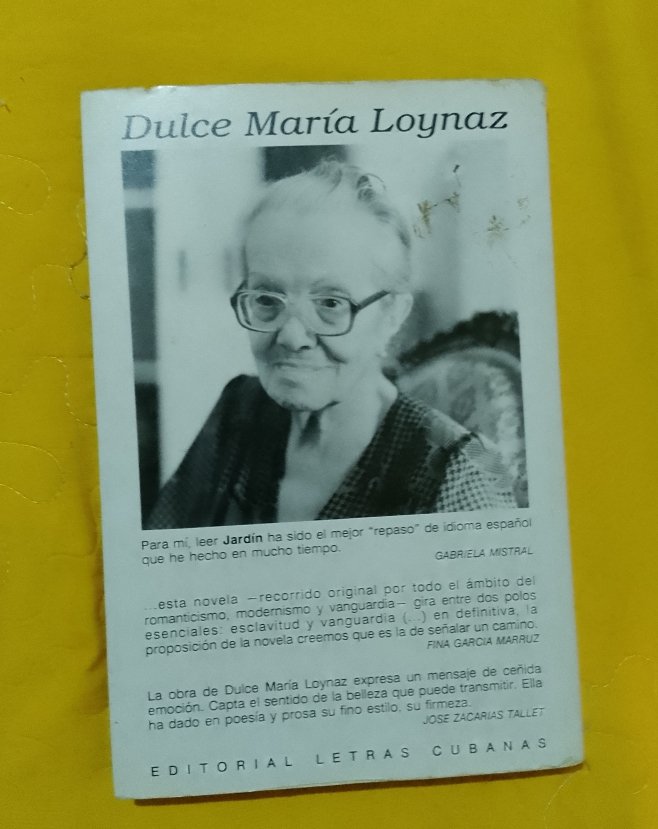
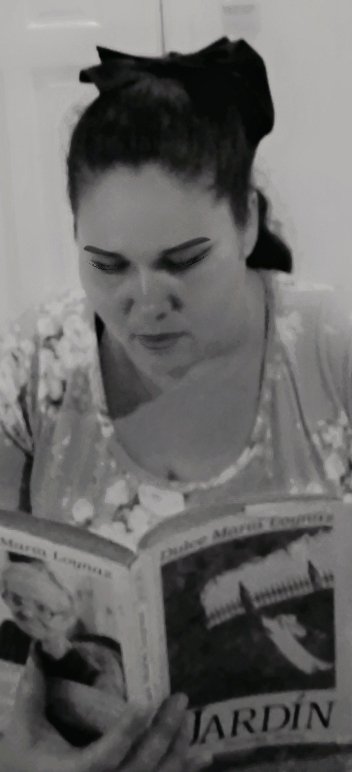
The novel takes turns; it twists into an inner journey, a constant questioning of existence. And it bifurcates subplots with love as the protagonist in its various forms and states.
Filled with symbolism and meanings to unravel, Dulce María Loynaz forces us to question our own concepts so that in search of new questions, an entire world opens up with new answers.
Within the narrative, she gifts us exquisite moments with letters so sweetly written that they return to the reader that idyllic flavor of her poetry. Perhaps this is why the author insisted on qualifying her book as a lyrical novel; she could not or did not want to detach herself from her voices as both storyteller and poet.
The protagonist, although enclosed within the walls of her home, does not stop dreaming of escape, and her imagination flies—flies so far and so high that sometimes the sense of reality is lost. Did this really happen to Bárbara or is it just an illusion created by her rejection of solitude?
Jardín is and will forever be a gem of Cuban literature. I can assure you that if you fall upon the softness of its pages, you will no longer be able to free yourself from its charm and like Bárbara, you will lose track of what is real and what is not.
But fear not; once you finish reading, you will gradually regain control. I don’t promise you will return being the same person you were before embarking on that imaginary journey because once you read Dulce María Loynaz… how much can you still be yourself? How much will have died from your old self? How could even your heartbeats continue impassively?
You do not read Dulce María Loynaz without feeling your body tremble, your insides stir. Without nostalgia and purest love changing you from within.

This post has been written without AI assistance, and all included photos are my own.

You received an upvote ecency
muy buen post!
Esa Dulce María nuestra, exclusiva, infinita.
Gracias por tu post.
A pollinator from The Pollen Nation feels this post deserves extra attention!
We appreciate your contribution to the blockchain.
For more information or to reach out to us, join our Discord server!
Mujeres habitadas por jardines somos. Gracias por ese post ❤️🌻👏🏻👏🏻👏🏻
Congratulations @yuraimatc! You have completed the following achievement on the Hive blockchain And have been rewarded with New badge(s)
Your next target is to reach 1750 upvotes.
You can view your badges on your board and compare yourself to others in the Ranking
If you no longer want to receive notifications, reply to this comment with the word
STOP